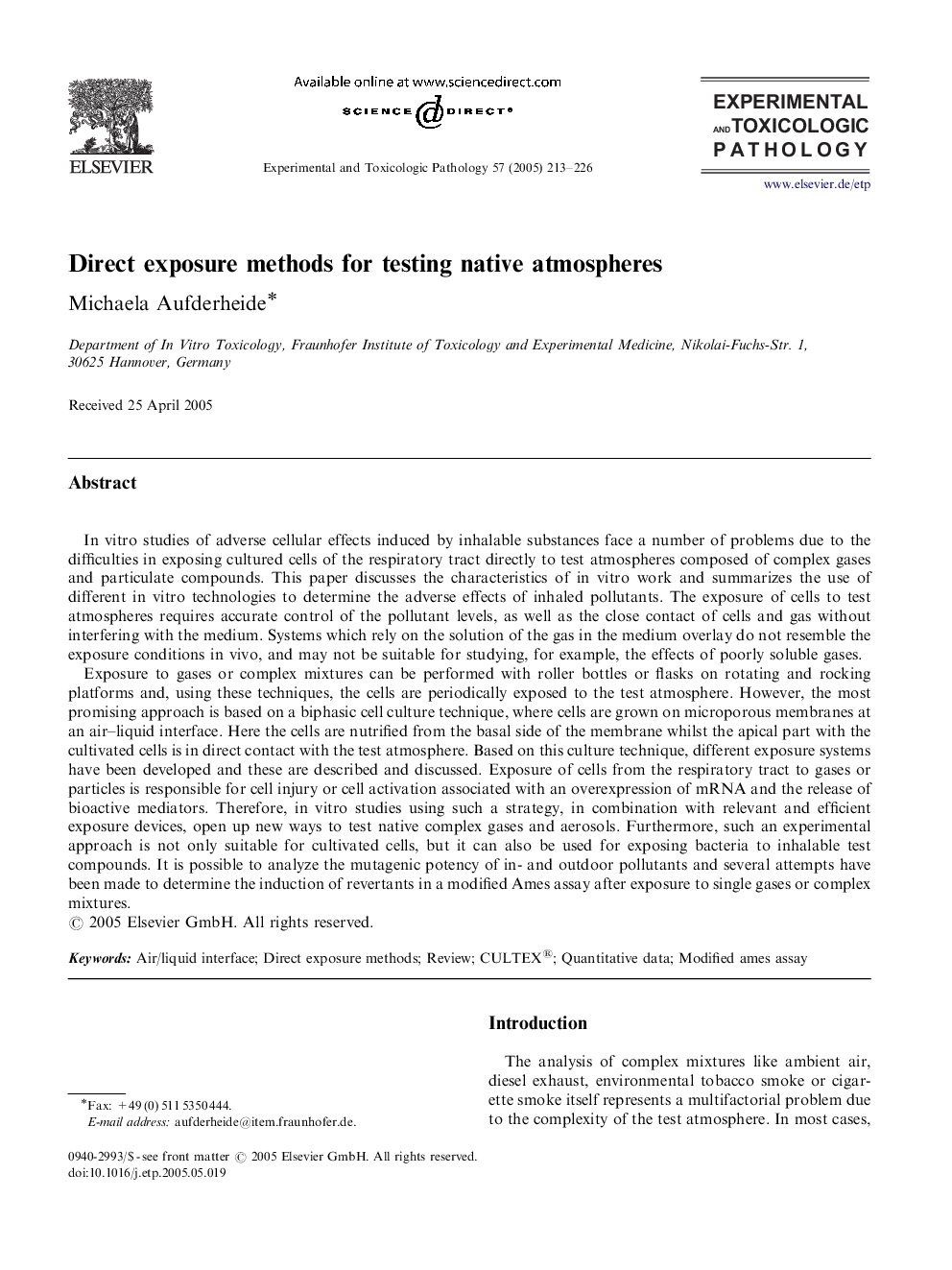| Article ID | Journal | Published Year | Pages | File Type |
|---|---|---|---|---|
| 9000469 | Experimental and Toxicologic Pathology | 2005 | 14 Pages |
Abstract
Exposure to gases or complex mixtures can be performed with roller bottles or flasks on rotating and rocking platforms and, using these techniques, the cells are periodically exposed to the test atmosphere. However, the most promising approach is based on a biphasic cell culture technique, where cells are grown on microporous membranes at an air-liquid interface. Here the cells are nutrified from the basal side of the membrane whilst the apical part with the cultivated cells is in direct contact with the test atmosphere. Based on this culture technique, different exposure systems have been developed and these are described and discussed. Exposure of cells from the respiratory tract to gases or particles is responsible for cell injury or cell activation associated with an overexpression of mRNA and the release of bioactive mediators. Therefore, in vitro studies using such a strategy, in combination with relevant and efficient exposure devices, open up new ways to test native complex gases and aerosols. Furthermore, such an experimental approach is not only suitable for cultivated cells, but it can also be used for exposing bacteria to inhalable test compounds. It is possible to analyze the mutagenic potency of in- and outdoor pollutants and several attempts have been made to determine the induction of revertants in a modified Ames assay after exposure to single gases or complex mixtures.
Related Topics
Life Sciences
Agricultural and Biological Sciences
Animal Science and Zoology
Authors
Michaela Aufderheide,
